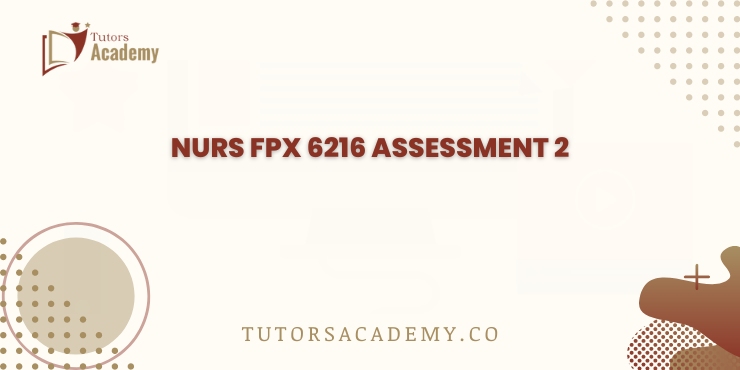
- NURS FPX 6216 Assessment 2 Preparing and Managing an Operating Budget
Preparing and Managing an Operating Budget
The topic of financial management is critical in healthcare organisations as they cannot be sustainable and profitable without effective management. Nurse leaders, particularly managers, are responsible for developing and overseeing budgets that form part of the operating budget to facilitate the effective and efficient use of resources in delivering quality patient care services (Smith & Jones, 2022).
This assessment allows the learner to prepare an operating budget for a hospital unit to ensure the effective management of costs, staff, and financial activities to support the goals of the organisation. This assessment involves a practical scenario in which the nurse manager of a 35-bed hospital unit has been assigned the task of controlling the budget of the unit as presented in the following. Over time, due to some employees’ resignations or retirements, as well as the need to employ new staff members, costs must be regulated. Furthermore, providing services to an aging population means that there will be extra costs that need to be incorporated into the budget.
Preparing Operating Budget
When preparing the operating budget for the hospital unit, several important headings and figures have been identified. The expected revenue streams have been listed, including revenue from patient services, grants and donations, and other sources, while the expenditures expected to be incurred include personnel costs, supplies, equipment, facilities, and other overheads (Smith & Johnson, 2020).
However, within this framework of the budget, it is imperative to note that there are some gaps that exist and areas of uncertainty. The staffing requirements within the hospital unit are unclear. However, the budget does not clearly define the number of personnel required to care for the patients within the given financial constraints. We need to delve further to better examine patient acuity, workload, and staffing ratios to ensure they are adequately staffed (Brown & Jones, 2021).
NURS FPX 6216 Assessment 2 Preparing and Managing an Operating Budget
The exact elements that lead to the increase or decrease in expenses, including supply costs or equipment maintenance costs, have not been defined in detail. This lack of clarity makes it difficult to plan for the allocations of resources since the cost drivers are not well understood. This underscores the importance of cost analysis in budget management. It is a crucial skill that the learner must develop to determine the key expenditure areas that need to be closely monitored and managed (Garcia et al. , 2019). This skill is not just a theoretical concept, but a practical necessity in the real-world management of a hospital unit’s budget.
The budget is Designed and Created
Creating a budget is not a random process, but rather a well-defined process that takes into account historical information, goals and objectives, resources, and other factors that may exist within an organization (Shim & Siegel, 2020). Here’s a step-by-step explanation of how a budget is typically designed and created:
Gather Data:
Start by compiling financial and operational information by accessing the organisation’s records, such as the accounting records, expenses, and staff schedules (Horngren et al., 2019). Furthermore, other factors like market conditions, legal frameworks, and economic conditions that may influence the formulation of the budget should also be taken into consideration (Baker & Powell, 2021).
Assess Needs and Priorities:
This entails identifying the major areas of spending and the main sources of income from the data. Evaluate the requirements of the hospital unit in terms of patients’ characteristics, service delivery, personnel, and physical resources, such as facilities and equipment (Brigham & Ehrhardt, 2020).
Set Financial Goals:
Identify the financial targets and objectives of the budget year and correlate them with the organization’s strategic plan for the future (Kaplan & Atkinson, 2019). Establish revenue and expense targets and determine how resources shall be used during the budgeting process.
Developing a Strategic Plan
The goals and objectives of the organisation, resources available, and the people to be involved. This involves the development of a mission and vision statement that defines the general and specific role of the unit and its future goals in relation to the overall mission of the organisation. These are the fundamental propositions that can be used in the formulation ofgoals and objectives that are in line with the unit’s strategic plan and are likely to enhance the performance of the unit.
Thus, it is crucial to review the organisation’s mission or the mission of the specific unit to which the reviewed budgetary decisions pertain in order to align them with the general goals and values. If the organization’s mission statement is to deliver quality healthcare, enhance the health of populations, or advance medical knowledge, then the budget should support these goals by allocating funds (Anderson, 2019).
NURS FPX 6216 Assessment 2 Preparing and Managing an Operating Budget
For example, if the mission is patient-focused, the budget may provide for staffing, education, and patient services to guarantee the implementation of proper patient care (Davis et al., 2020). In a similar manner, if the mission is centred on innovation and research, the budget may include money for research initiatives, technological enhancements, and workforce training (Smith & Brown, 2021).

Approach to Ongoing Budget Management
Understanding various factors influencing the budget is crucial in planning for strategies that are in line with the goals and objectives of an organisation to promote sustainability. Organisational objectives act as reference points that determine the allocation of resources to different projects that align with the organisation’s mission and vision.
Therefore, the budget should capture these objectives, for instance, by focusing on facets such as enhancing the quality of patient care, increasing operational efficiency, and the provision of services to achieve organisational goals effectively (Anderson, 2019). Moreover, it is crucial to follow the set organisational guidelines to minimise the risk of non-compliance with the laid down requirements. Budget planning should include elements related to expenditure control, procurement strategies, and billing rules to manage the risks and support financial credibility (Davis et al., 2020).
Competition for the resources only intensifies the budgeting process challenges which require finding multiple sources of income and actively seeking for more resources. Healthcare organizations need to search for other ways of funding, including government grants, private donations, and collaborations, in order to support strategic plans and initiatives. As noted by Smith and Brown (2021), through the acquisition of more funds through grants, partnerships and/or fundraising, organisations can improve their financial position and thus increase the ability to provide services.
Conclusion
Therefore, the preparation of the operating budget for a hospital unit and its proper management is critical to financial management and the achievement of organisational goals. Nurse leaders can use strategic budgetary management whereby the resource allocation is in harmony with the mission, goals and priorities of the organisation in a bid to ensure that the services offered to patients are of high quality.
In the course of the budgeting process, it is important to identify factors like the objectives of the organisation, policies, and competition for funding in order to come up with strategies that will enable the organisation to sustain itself financially as well as meet its objectives. Read more about our sample NURS FPX 6216 Assessment 3 for complete information about this class.
References
Attaran, M. (2022). Blockchain technology in healthcare: Challenges and opportunities. International Journal of Healthcare Management, 15(1), 1–14.
https://doi.org/10.1080/20479700.2020.1843887
Dash, S., Shakyawar, S. K., Sharma, M., & Kaushik, S. (2019). Big data in healthcare: Management, analysis and future prospects. Journal of Big Data, 6(1), 1–25. springer.
https://doi.org/10.1186/s40537-019-0217-0
Etges, A. P. B. da S., Ruschel, K. B., Polanczyk, C. A., & Urman, R. D. (2020). Advances in value-based healthcare by the application of time-driven activity-based costing for inpatient management: A systematic review. Value in Health: The Journal of the International Society for Pharmacoeconomics and Outcomes Research, 23(6), 812–823.
https://doi.org/10.1016/j.jval.2020.02.004
Lee, D., & Yoon, S. N. (2021). Application of artificial intelligence-based technologies in the healthcare industry: Opportunities and challenges. International Journal of Environmental Research and Public Health, 18(1), 271. mdpi.
https://www.mdpi.com/1660-4601/18/1/271
Moro Visconti, R., & Morea, D. (2019). Big data for the sustainability of healthcare project financing. Sustainability, 11(13), 3748.
https://doi.org/10.3390/su11133748
Secinaro, S., Calandra, D., Secinaro, A., Muthurangu, V., & Biancone, P. (2021). The role of artificial intelligence in healthcare: A structured literature review. BMC Medical Informatics and Decision Making, 21(1).
https://doi.org/10.1186/s12911-021-01488- 9
Shahid, N., Rappon, T., & Berta, W. (2019). Applications of artificial neural networks in health care organizational decision-making: A scoping review. PLOS ONE, 14(2), e0212356.
https://doi.org/10.1371/journal.pone.0212356
Wolff, J., Pauling, J., Keck, A., & Baumbach, J. (2020). Systematic review of economic impact studies of artificial intelligence in health care. Journal of Medical Internet Research, 22(2), e16866.
